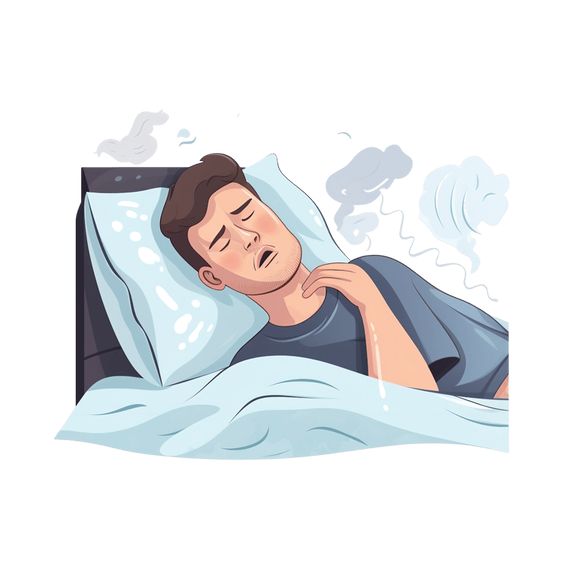Introduction:
Sleep apnea is a common sleep disorder that affects millions of people worldwide. It is characterized by pauses in breathing or shallow breaths during sleep. These pauses can last from a few seconds to minutes and can occur multiple times throughout the night. Sleep apnea disrupts sleep and can lead to various health problems if left untreated.

This blog post will discuss sleep apnea, including its symptoms, causes, and treatment options. Understanding the basics of sleep apnea can help individuals seek timely medical attention and improve their sleep quality and overall health.
What is Sleep Apnea?
Sleep apnea is a sleep disorder characterized by repeated interruptions in breathing during sleep. These interruptions, known as apneas, occur when the airway becomes blocked or collapses, obstructing airflow. The most common type of sleep apnea is obstructive sleep apnea (OSA), which occurs when the soft tissues in the back of the throat relax and block the airway.
Symptoms of Sleep Apnea
Recognizing the symptoms of sleep apnea is crucial for early diagnosis and treatment. Common symptoms include:
- Loud snoring: One of the most noticeable symptoms, often irregular and interrupted by gasping or choking sounds.
- Excessive daytime sleepiness: Feeling excessively tired and sleepy during the day, even after seemingly adequate sleep.
- Gasping or choking for air during sleep: Sudden awakenings with a feeling of breathlessness or choking.
- Morning headaches: Frequent headaches upon waking up, often dull and throbbing.
- Difficulty concentrating: Impaired cognitive function, including problems with focus, memory, and attention.
- Irritability and mood changes: Increased irritability, mood swings, and feelings of depression or anxiety.
Treatment Options for Sleep Apnea
Treating sleep apnea is essential to improve sleep quality, reduce health risks, and enhance overall well-being. Treatment options vary depending on the severity of the condition and individual needs. Common treatment methods include:
- Lifestyle changes: Losing weight if overweight or obese, quitting smoking, and avoiding alcohol and sedatives before bed can help improve sleep apnea symptoms.
- Continuous positive airway pressure (CPAP) therapy: The most common and effective treatment for sleep apnea, CPAP therapy involves wearing a mask over the nose or nose and mouth during sleep. The mask is connected to a machine that delivers a constant stream of air pressure, keeping the airway open.
- Oral appliances: Custom-fitted oral devices, similar to mouthguards, can help keep the airway open by repositioning the jaw and tongue.
- Surgery: In some cases, surgery may be recommended to remove excess tissue or correct structural abnormalities in the airway.
Conclusion
Sleep apnea is a serious sleep disorder that can significantly impact health and well-being. Recognizing the symptoms and seeking timely medical attention is crucial for effective management. With appropriate treatment, individuals with sleep apnea can improve their sleep quality, reduce health risks, and enhance their overall quality of life.

.jpg)